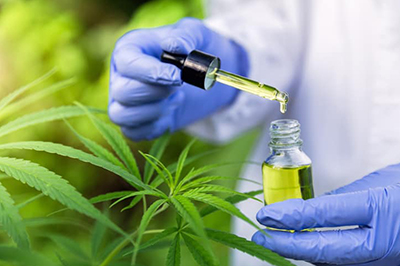Why It’s Important To Test Cannabis Products
Have you made it a habit to purchase your weed from the illicit market? If yes, there are a thousand and one reasons to stop it now. The most important one is that it can cut short your lifespan—literally. If you’re still in doubt, the story of the 68 persons who lost their lives and at least 2,800 who were hospitalized for consuming untested marijuana products in 2019 may just be the reality check you need. This unfortunate incident has been termed “the EVALI/VAPI outbreak,” caused by illicit weed sellers adding unapproved thickeners to vape cartridges.
We all just want a good smoke without worrying about unexpected side effects. And that’s enough reason to only get cannabis products in the legal market. That’s because everything in the legal market is regulated and has undergone a series of tests to ensure they’re safe for consumption.
Read on for more information on this.
How Do Agencies Test and Regulate Cannabis?
 Cannabis legalization comes with numerous benefits, which include cannabis regulation and testing. After voting to legalize weed, a location will typically dedicate a year (or thereabouts) to creating cannabis regulatory authorities that’ll test and track marijuana products before opening dispensaries for public purchase. Some locations decide to do this by expanding the roles of already existing state health, liquor, or medical marijuana agencies to include adult-use cannabis monitoring and regulation. Others will create an entirely new organization for a similar purpose.
Cannabis legalization comes with numerous benefits, which include cannabis regulation and testing. After voting to legalize weed, a location will typically dedicate a year (or thereabouts) to creating cannabis regulatory authorities that’ll test and track marijuana products before opening dispensaries for public purchase. Some locations decide to do this by expanding the roles of already existing state health, liquor, or medical marijuana agencies to include adult-use cannabis monitoring and regulation. Others will create an entirely new organization for a similar purpose.
Regardless of their approach, they will proceed to issue licenses to producers, processors, retailers, testers, distributors, and other groups within their cannabis industry. They use computer systems to monitor the products as they pass through the channels from production to consumption. The products will only be good enough for sale when they have passed all the stages of testing.
What Is Marijuana Tested For?
The types of testing a cannabis product will undergo typically vary among location and their regulatory agencies. Generally, however, marijuana is expected to be tested for the following before it can be sold to adults in the legal market:
Chemical Contaminants
There are chemical processes involved in weed production, and regulatory bodies try to ensure that chemical contaminants aren’t introduced to the products at any point. For example, many farmers use chemical pesticides to grow their cannabis. Unfortunately, while they play an all-important role in keeping the pests away, they’re harmful for human consumption.
As such, they test cannabis products for various types of chemical contaminants (including chemical solvents and heavy metals) to ensure they’re within safe consumption levels. Cannabis products with unacceptable pesticide levels will be banned from sale in legal markets.
Physical Contaminants
From insect parts to human hair and lots more, it’s not uncommon to find foreign materials in some cannabis products. Not only are these physical contaminants harmful to the health, but they’re also clear evidence that someone didn’t adhere strictly to production/handling standards. As such, when testers’ visual inspection shows that any cannabis product has been compromised, such an item will not be cleared for legal sale.
Microbial Contaminants
Do you love the feel and sight of molds in your marijuana? No? The regulatory bodies don’t too. Unfortunately, just like physical and chemical products, it’s pretty easy and common for bacteria, mycotoxins, and other microbial agents to contaminate your weed. And when they do, they can get you sick.
For example, mycotoxins are mold-induced harmful substances that look like residues on your nug. According to the CEO of Confidence Analytics cannabis testing laboratory, Nose Mosely, “Mycotoxins can cause acute liver damage, and long-term exposure can lead to cancer.” As such, states must test for microbial contaminants to avoid public health problems.
Potency
Although potency tests typically focus on measuring a product’s THC levels, they also include THCA, CBD, and CBDA. According to Mosely, they record the “fun stuff.” That is, they’re the substances that determine the strength of your weed. States have to test for potency to ensure that stoners don’t take more than is safe at a time. Generally, cannabis flowers have THC levels of 15% to 25%, with concentrates falling between 50% to 80% THC or above.
Mosely explains that it’s common to have inflated potency results. He says, “it’s hard to accurately measure cannabinoids, and if you’re going to do a sloppy job, you’re probably going to end up biasing on the high side.”
It’s important to note that even though it’s not compulsory, some brands pay more also to test terpenes and cannabinoid levels. This is to satisfy the wishes of clients who want to see a complete analysis of their products’ cannabis profiles.
Wrap Up
Customer safety, quality control, and assurance are the primary reasons for testing and regulating cannabis products. Correctly done, it ensures that your marijuana is safe to consume and that you get the highest quality weed possible on all ramifications. We’re in full support of cannabis testing/regulation, and if you’re a sucker for the finer things in life, you should too!

